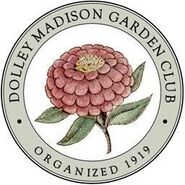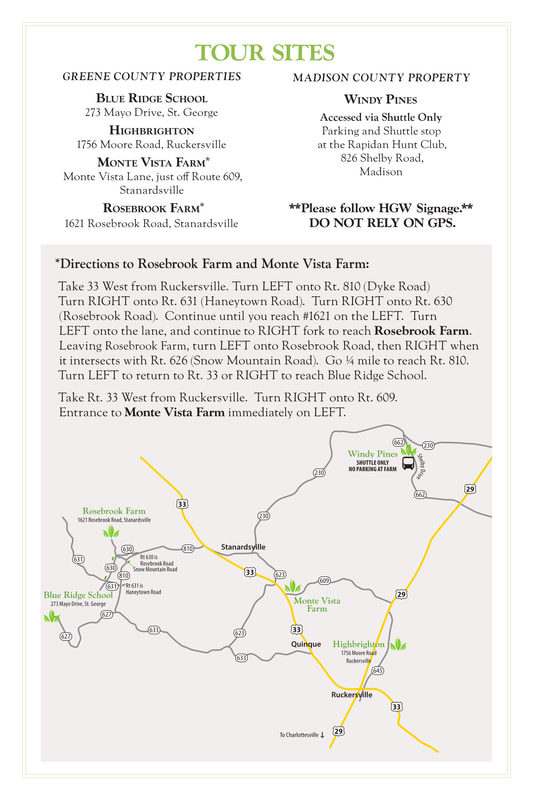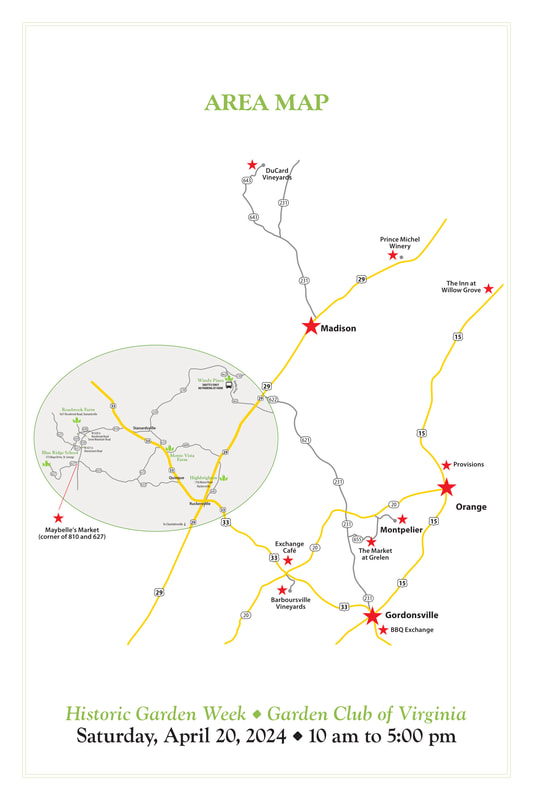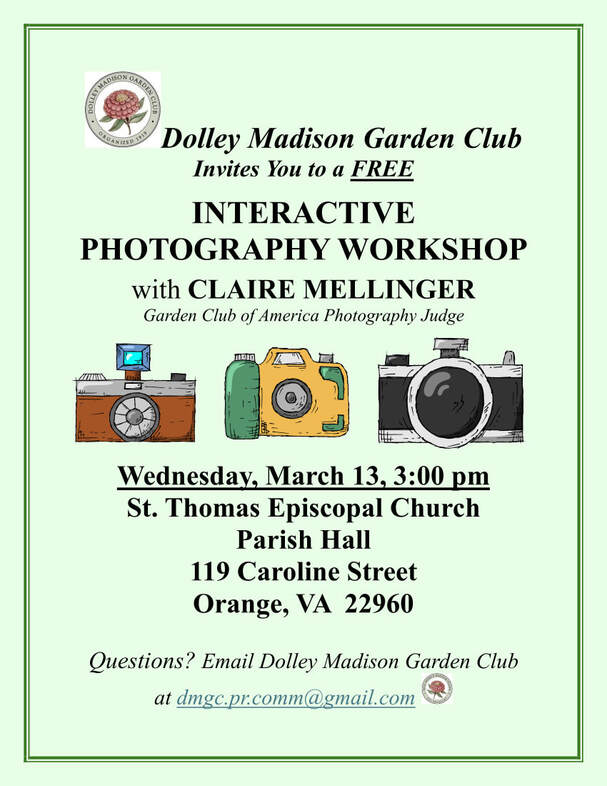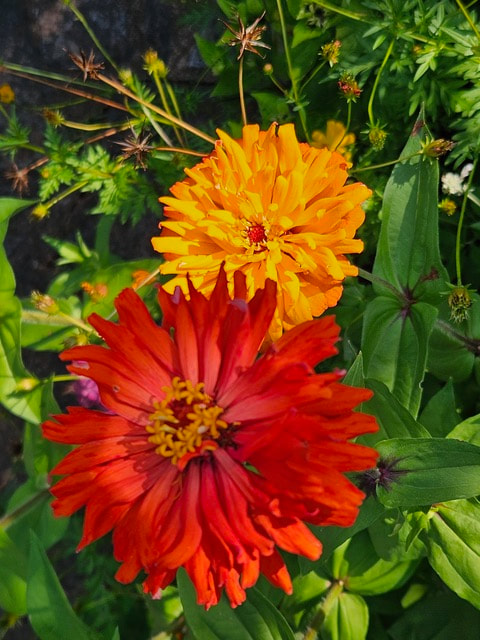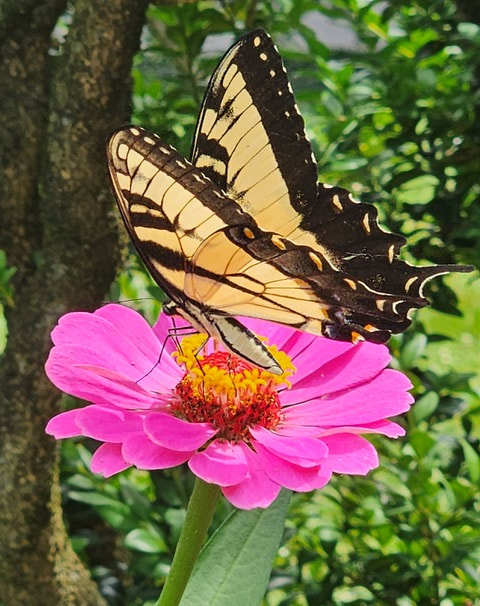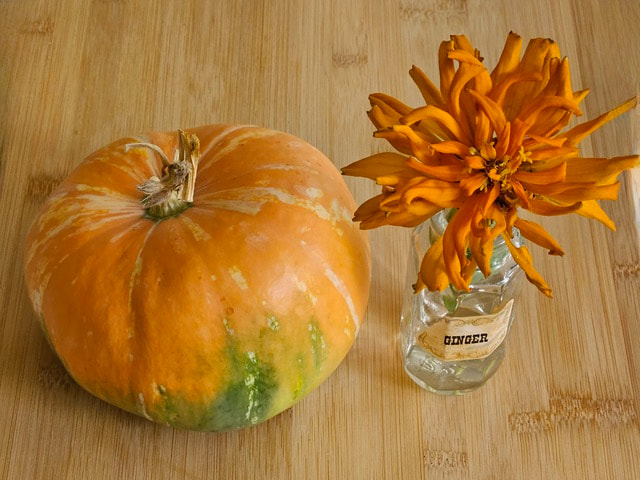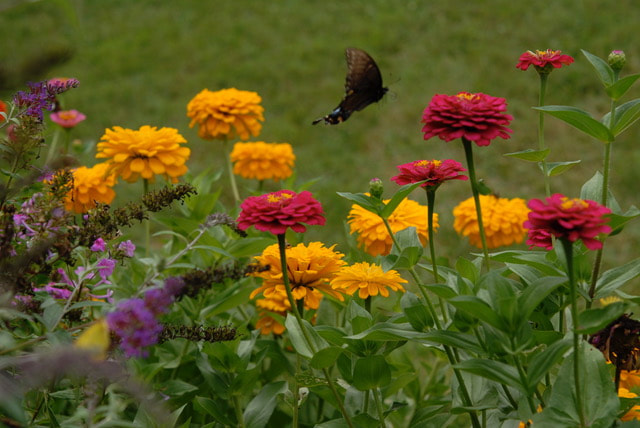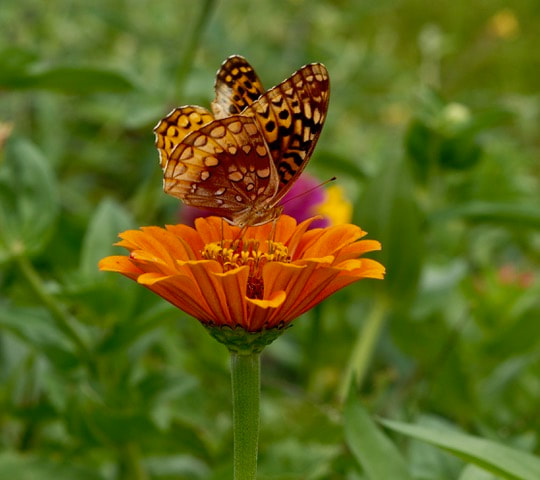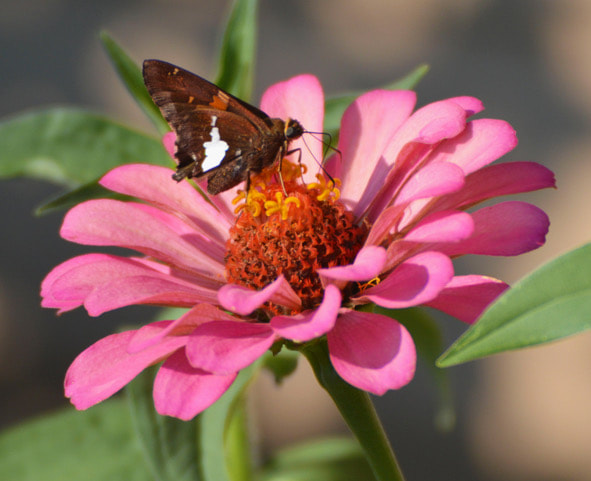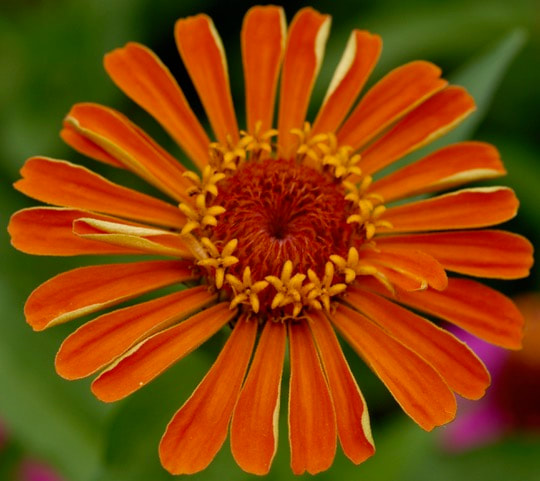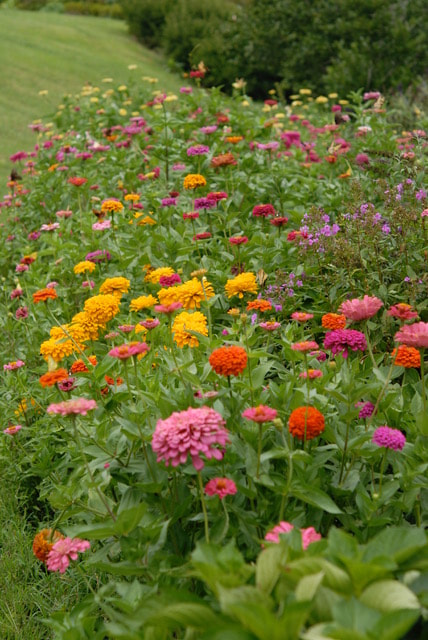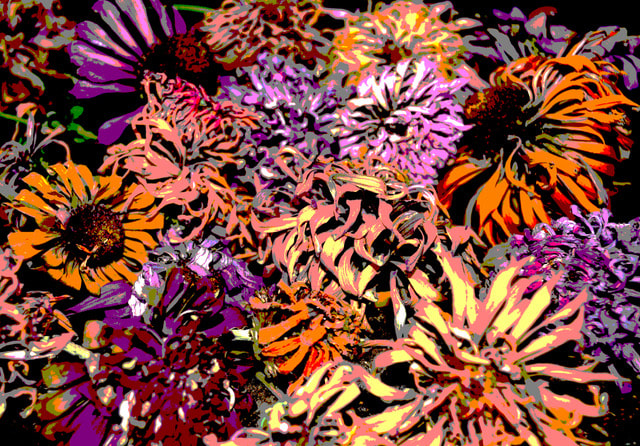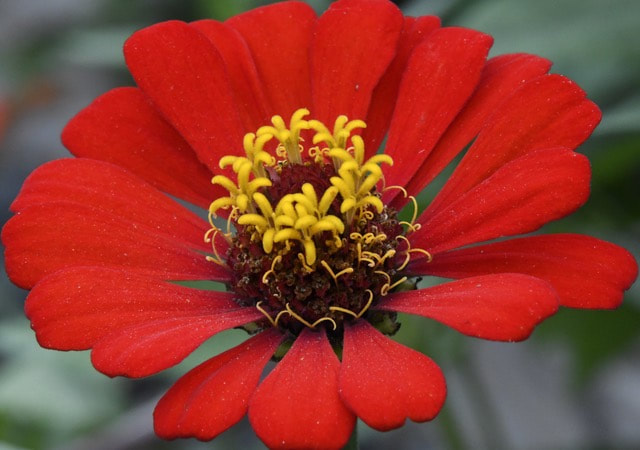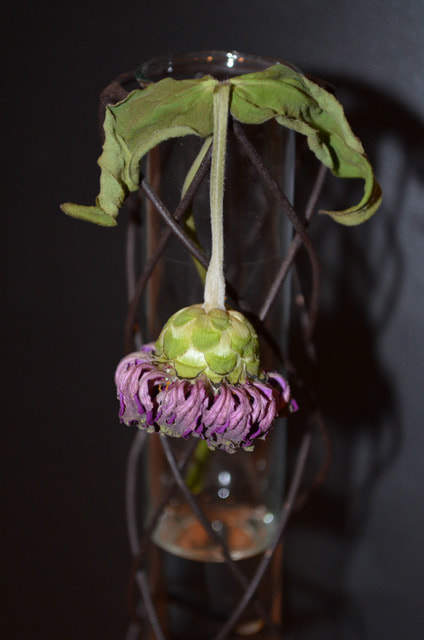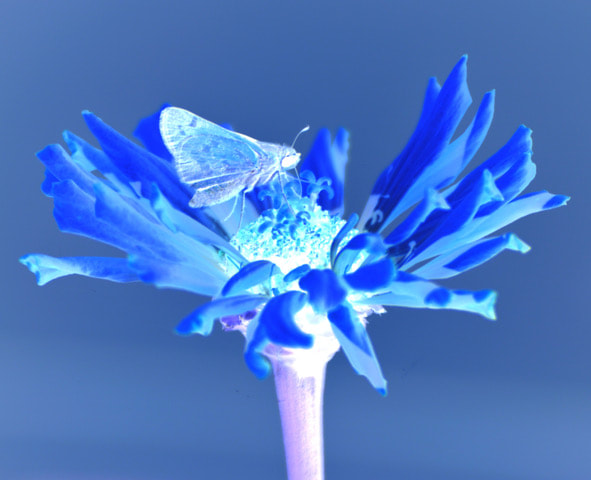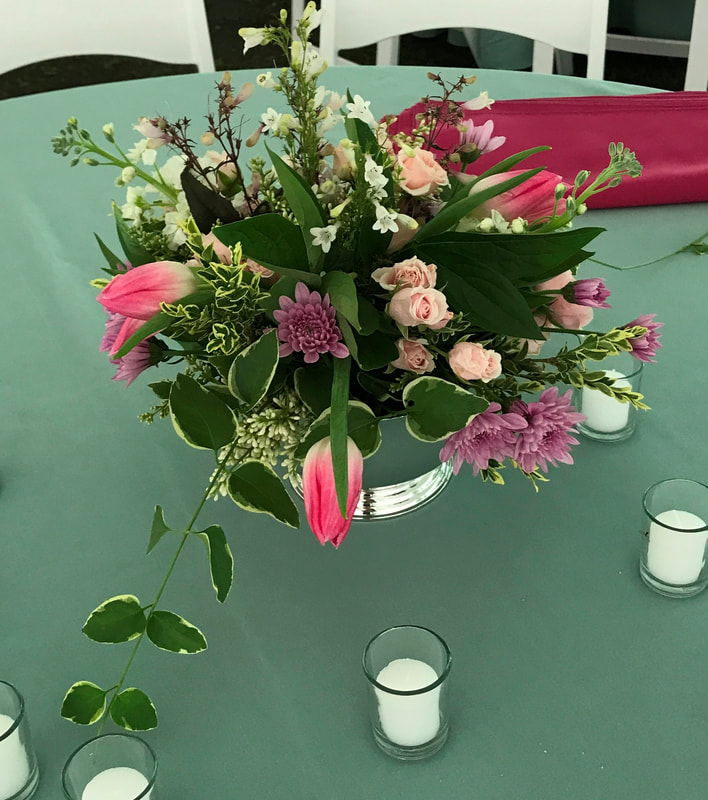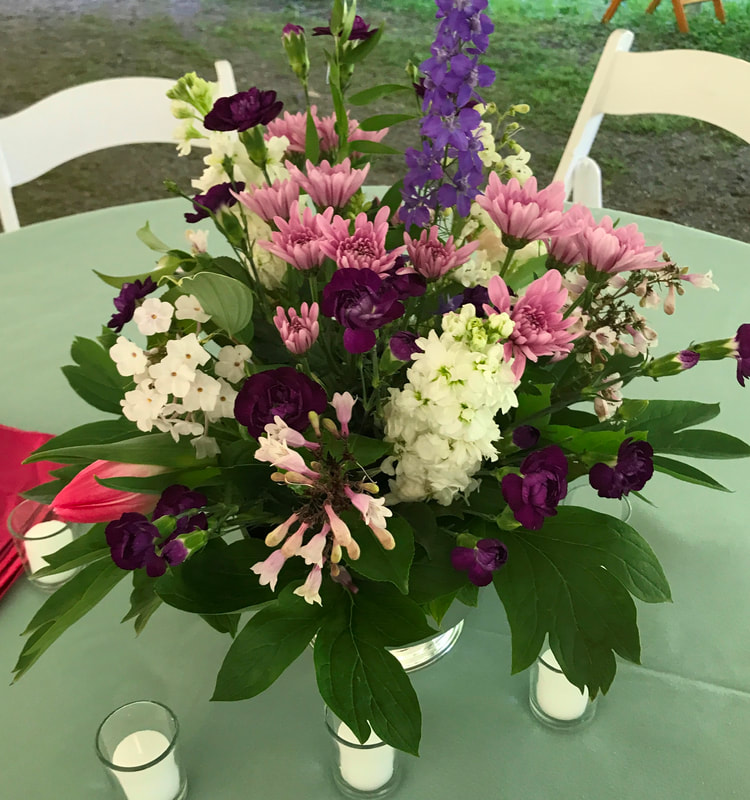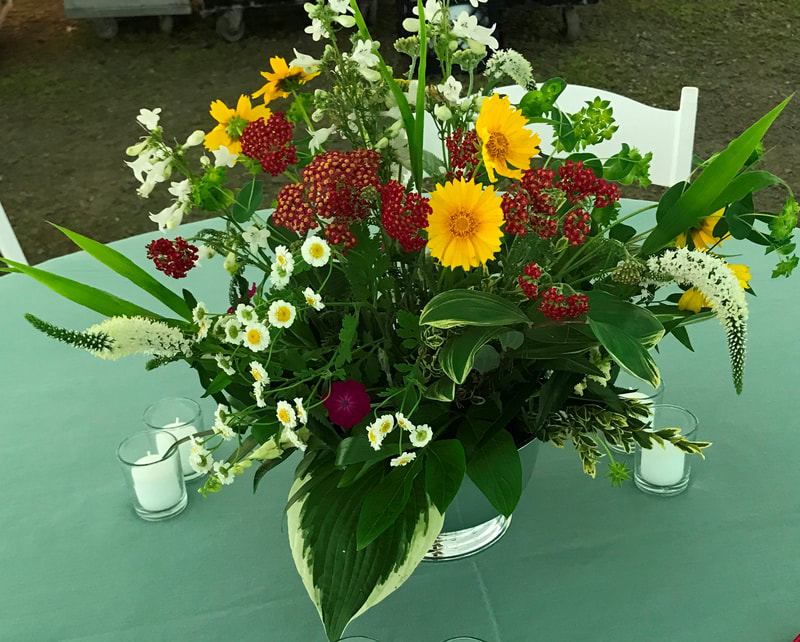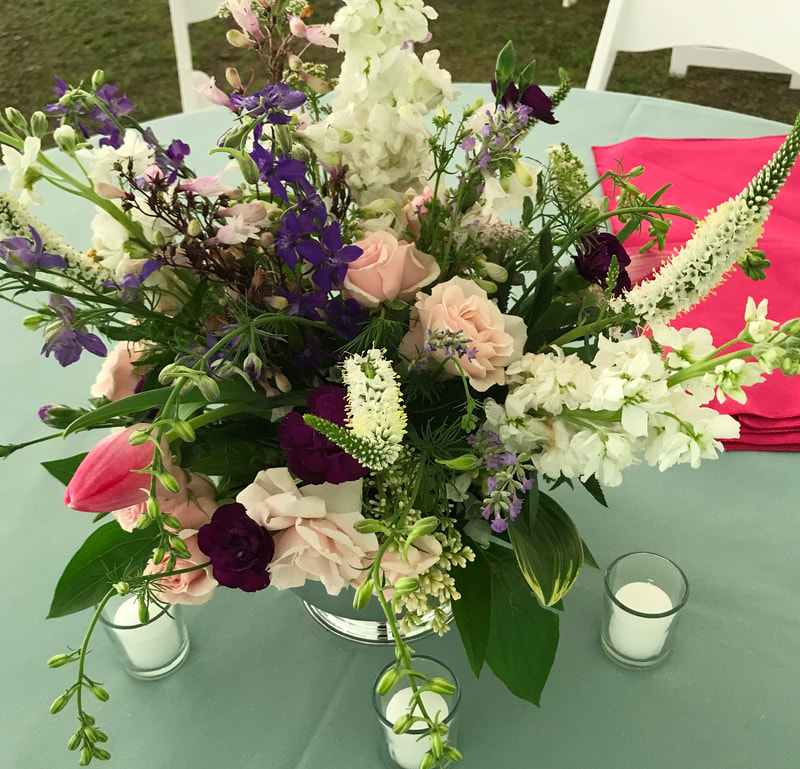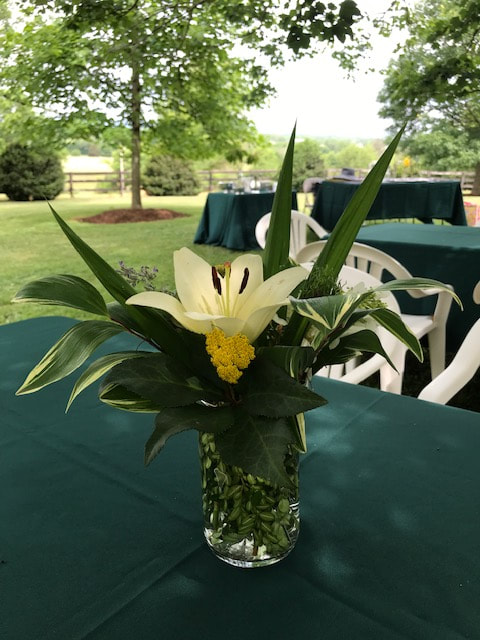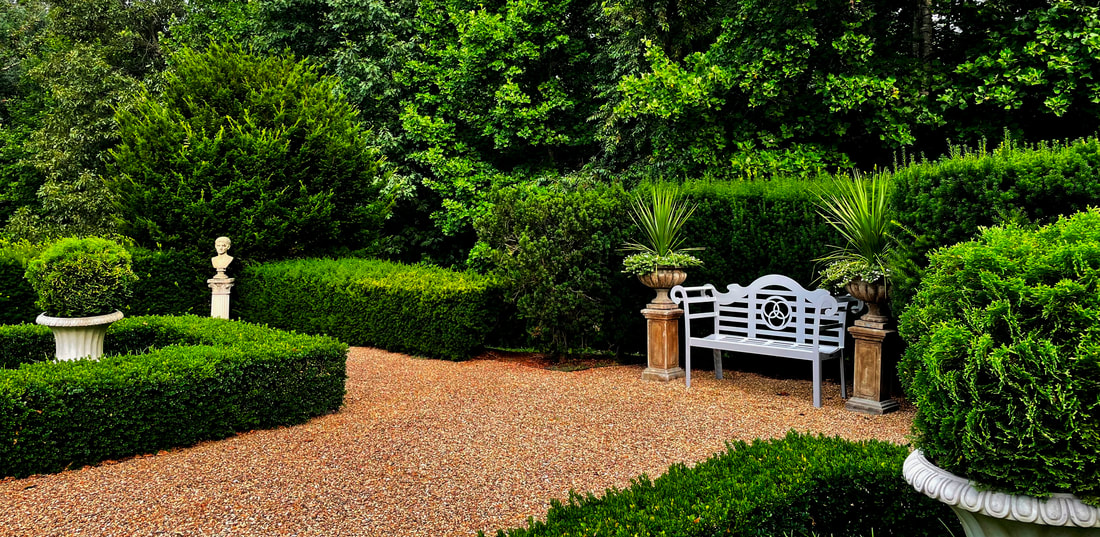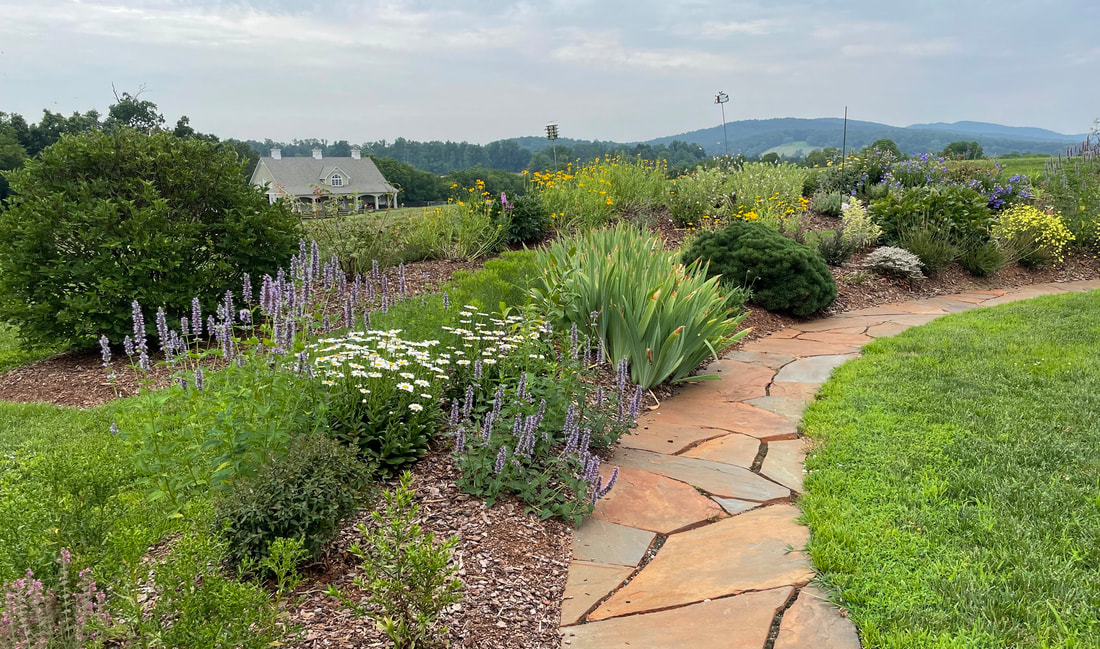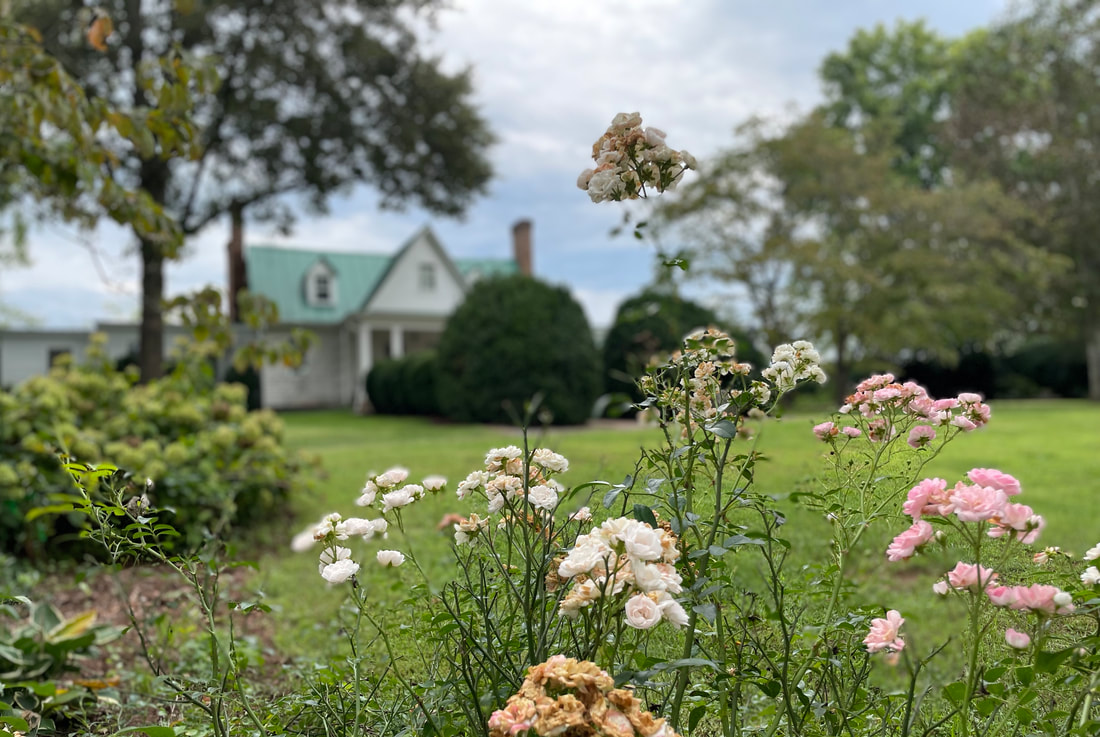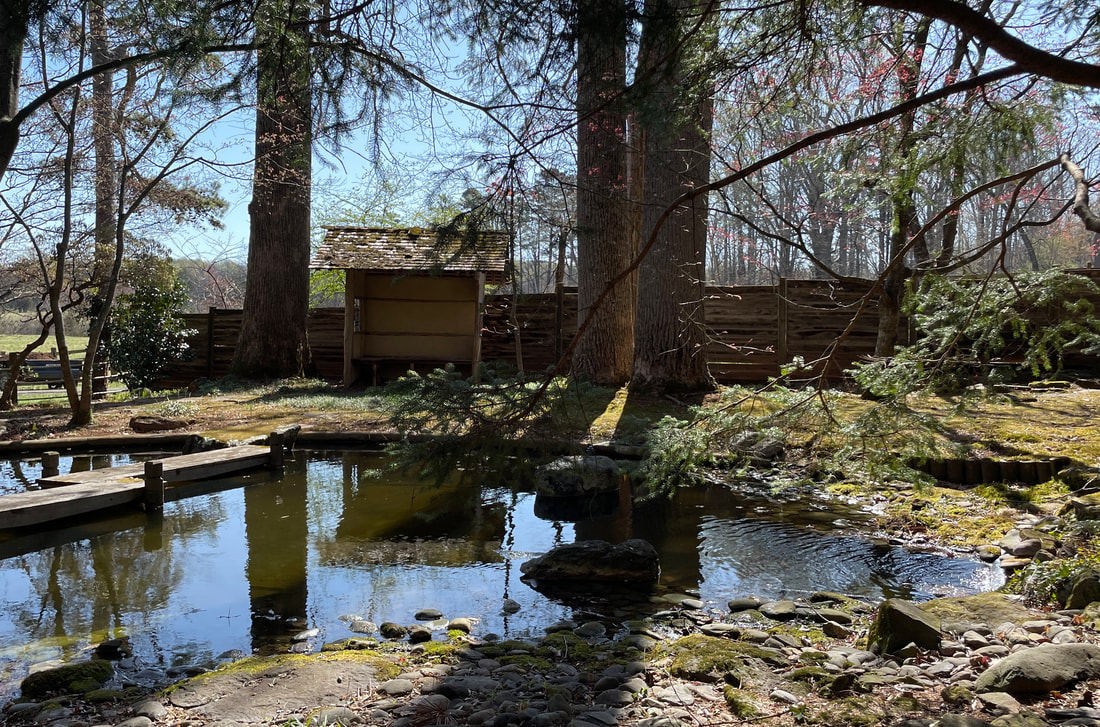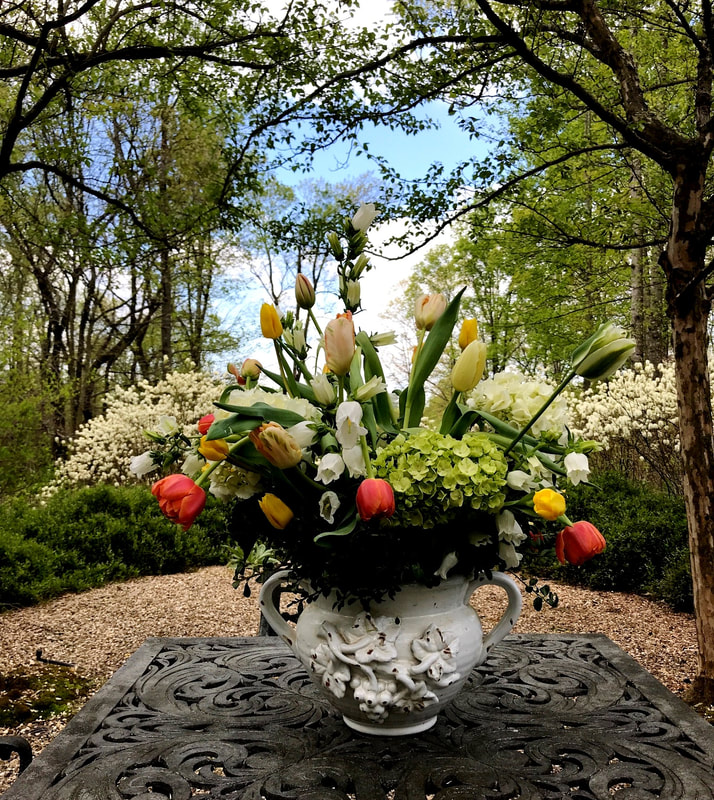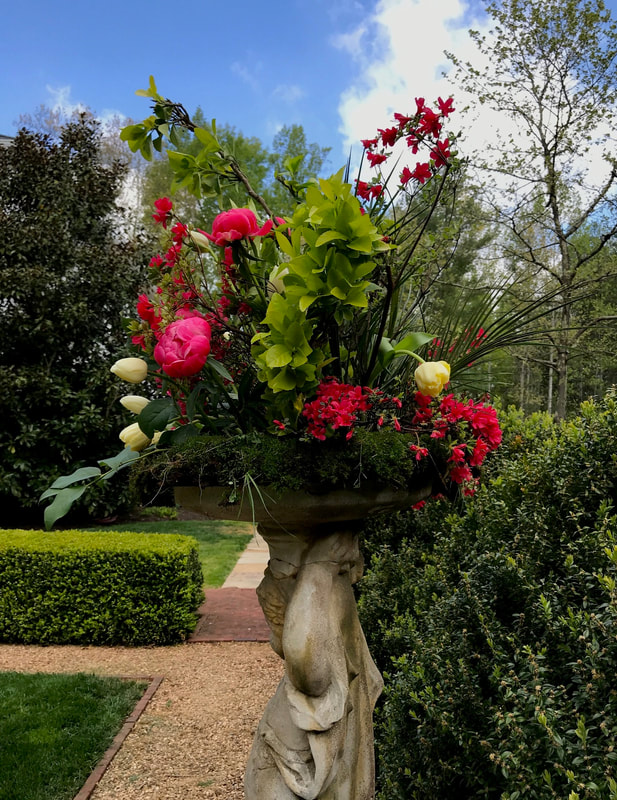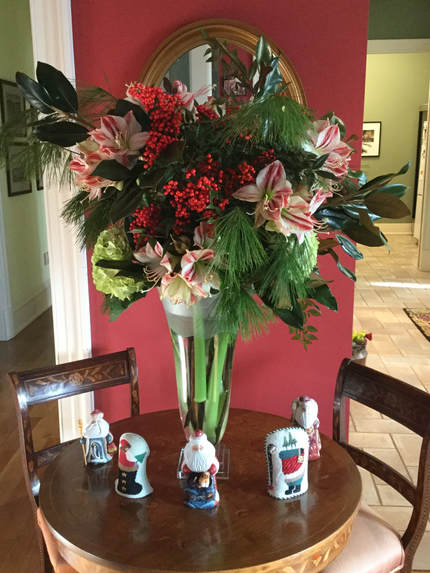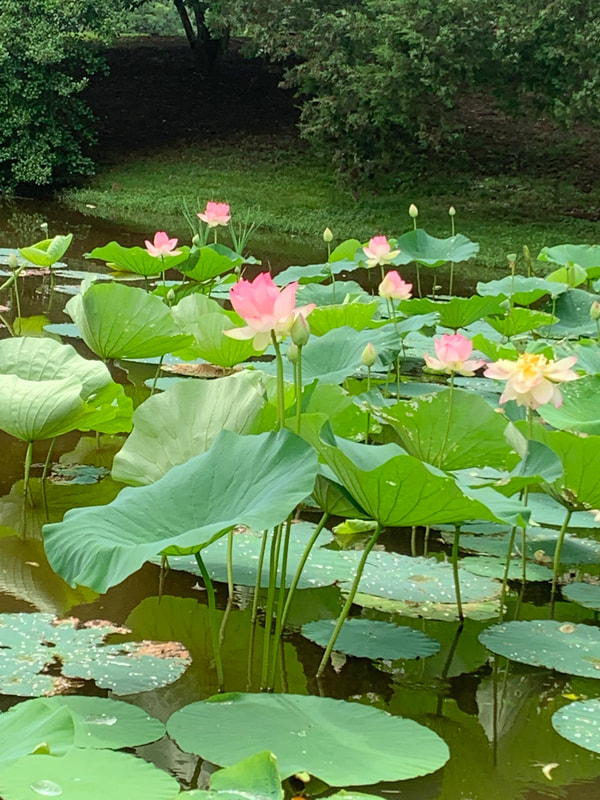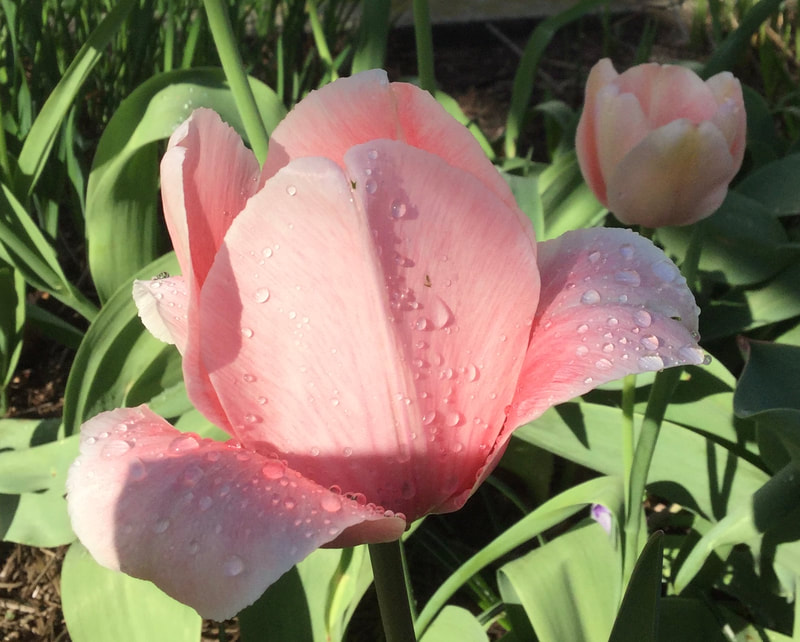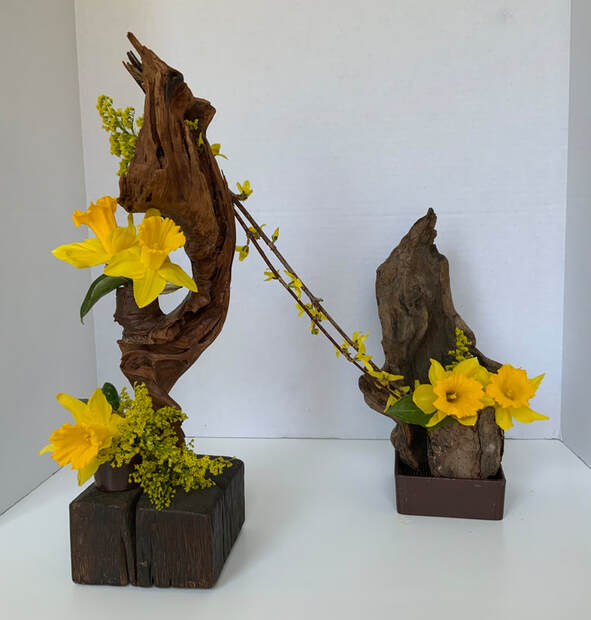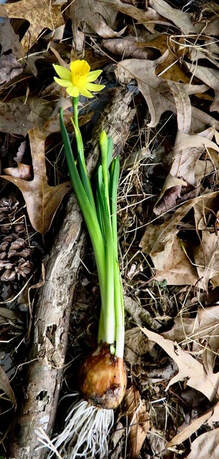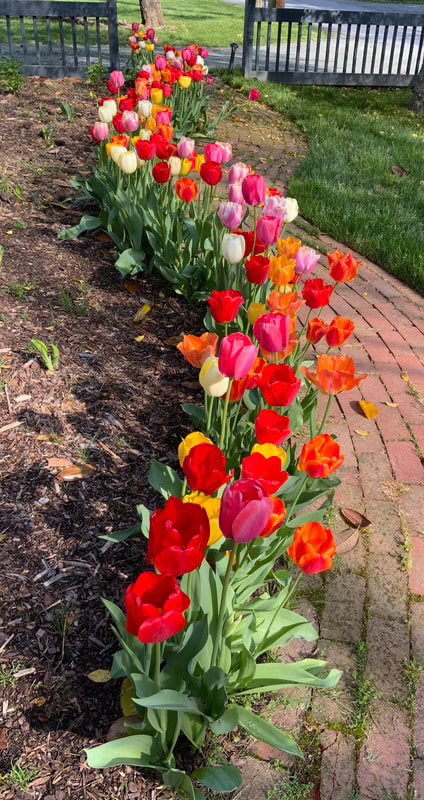|
5 Steps to Documenting a Garden
We were so lucky to be able to visit Rocklands, the home and gardens of Bruce and Jacqueline Gupton. Gail Babenew, who documented Rocklands for The Smithsonian Archives of Gardens, put together a comprehensive manual on the process she went through. It will serve as an incredibly helpful manual for anyone undergoing the process of documenting a garden. Following Gail's presentation Bruce Gupton took the group on a tour of not just the English, French, and Italian gardens, but the car garage, wine cellar, and the first floor of their home. He had entertaining stories about the process of creating the gardens, facts about the history behind many of the objects both inside and out, and even a history of the license plate collection in his garage. Such and interesting and fabulous journey the Gupton's have been on. After Bruce dashed off to catch a flight Jacqueline took the group up to the 18th century watch tower and answered questions. A huge thank you to the Guptons and Gail B. for such an inspiring day! Oh and soon to come a new Japanese garden - think Matisse and red bridges. |
|
Daffodil Day 2024
Dancing with Daffodils Held on March 27th at Virginia Wesleyan University in Virginia Beach, this year's Daffodil Day was a great show for DMGC! Artistic Design Pat Filer not only won Best in Show for an Individual Arranger but also The Decca Gilmer Frackelton Award and the Tri-Color. Horticulture Bridget Bryant - 4 Blues, 2 Reds, 5 Yellow, 7 White, HM Suzie Bresee - 3 Blues, 1 Red, 2 White, HM Catherine Gillespie - 3 Blues, 3 Reds, 1 Yellow, 8 White, HM Jane Hammond - Special award ADS for Best Miniature Container, 10 Blues, 2 Reds, 5 Yellow, 4 White, HM Photography Jane Hammond received a 1st place and Mary Queitzsch a 2nd place. Also... Virginia Daffodil Society Show, Lewis Ginter, Richmond 3/23/24 Jane Hammond - 6 Blues, 1 Red, 2 Yellow, 1 White, HM |

Happy Birthday President Madison!
In celebration of James Madison's birthday (March 16th) the Dolley Madison Garden Club presented this beautiful wreath of daffodils at Montpelier. The restoration of the Dupont-era garden at Montpelier is a beneficiary of the proceeds raised from Historic Garden Week ticket sales.
Interactive Photography Workshop with Claire Mellinger
Hosted by the Photography Committee, March's meeting began with many tasty treats, beautiful horticulture exhibits, and a viewing of images by Committee members. The exhibit, Architectural Details of Orange County, included images in both black and white and color. While there was no "winner" the meeting's speaker, GCA Photography Judge Claire Mellinger, offered comments for all of the images.
Mellinger then presented to an audience of DMGC members and the general public, a comprehensive overview of what makes a great photograph. Mellinger's high energy, funny, and self-deprecating approach made the process accessible to everyone. Following the presentation she took the audience outside to snap a few pictures of arrangements she brought and offered one-on-one assistance.
Mellinger then presented to an audience of DMGC members and the general public, a comprehensive overview of what makes a great photograph. Mellinger's high energy, funny, and self-deprecating approach made the process accessible to everyone. Following the presentation she took the audience outside to snap a few pictures of arrangements she brought and offered one-on-one assistance.
Floradise Orchids Field Trip
A big thank you to Suzanne Aiello who organized our field trip to Floradise Orchids in Gordonsville. What a gem! The variety of species was outstanding and the owners were so generous with their time in answering all of our questions. No one left empty handed. If you haven't visited they are easy to find on Rt. 15 going in to Gordonsville.
December Meeting - Christmas Luncehon
|
The holiday spirit filled the air as we gathered together for a Christmas luncheon. The Exchange Cafe provided an intimate venue and a delicious meal. To add to the Christmas vibe, Pat Filer provided charming holiday centerpieces for each table - thank you Pat. Of course, the best part of the gathering was the opportunity to chat with friends. Thank you to our hostesses Jane Hammond and Mary Queitzsch for organizing such a delightful event.
Merry Christmas to All! |
September Meeting - DMGC Zinnia Show
A break in the heat provided DMGC members with a wonderful late summer morning for our first meeting of the new year. The inter-club Zinnia Show was the main event with numerous entries in Horticulture, Artistic Design and Photography. Members were able to experience preparing entries for a show and receiving feedback in a fun and stress-free environment.
Pat Filer and Annie Vanderwarker walked attendees through what judges look for in Artistic Design as well as tips on how to improve their arrangements. Jane Hammond explained judging guidelines and standards for Horticulture and threw in some tips of her own on presenting an impressive bloom. Bernice Walker provided her own experiences regarding the range of attributes the same variety of zinnia can produce. Photography entries would receive their feedback at a later date from photography judge Claire Mellinger.
Special thanks to Catherine Gillespie for hosting the meeting.
Pat Filer and Annie Vanderwarker walked attendees through what judges look for in Artistic Design as well as tips on how to improve their arrangements. Jane Hammond explained judging guidelines and standards for Horticulture and threw in some tips of her own on presenting an impressive bloom. Bernice Walker provided her own experiences regarding the range of attributes the same variety of zinnia can produce. Photography entries would receive their feedback at a later date from photography judge Claire Mellinger.
Special thanks to Catherine Gillespie for hosting the meeting.
Wander - Discover - Be Inspired
Dolley Madison Garden Club Hosts
Historic Garden Week
April 20, 2024, 10am-5pm
|
The Blue Ridge Mountains surround four unique properties under conservation easements featured on this year’s tour in Greene and Madison counties – Orange County’s neighbors. Meadows, native plants, organic flower and vegetable gardens, pollinator-attractive and wildlife friendly native flowers and trees round out this conservation-oriented tour.
|
Ticket Sales
Online: www.vagardenweek.org
Locally:
The Arts Center in Orange - 129 East Main Street, Orange
The Laurie Holliday Shop - 123 South Main Street, Gordonsville
The Market at Grelen - 15091 Yager Road, Somerset
*Tickets purchased locally will include a wristband that gives access to all five tour sites.
Locally:
The Arts Center in Orange - 129 East Main Street, Orange
The Laurie Holliday Shop - 123 South Main Street, Gordonsville
The Market at Grelen - 15091 Yager Road, Somerset
*Tickets purchased locally will include a wristband that gives access to all five tour sites.
Photos of homes and gardens by Carla Passarello; photos of Rosebrook by Susan Austin Roth and Jim Hurley, owners.
Thank you to our local advertisers!
|
The following businesses are offering day of tour lunches:
Exchange Cafe Maybelle's Market Prince Michel Vineyard & Winery The Market at Grelen Picnic lunches can be enjoyed at the BlueRidge School and DuCard Vineyards. |
Photography Workshop Venue Change:
Orange County Historical Society
130 Caroline Street, Orange, VA
Orange County Historical Society
130 Caroline Street, Orange, VA
DMGC 104th Annual Meeting and Awards Ceremony
On June 13, 2023 the DMGC held their 104th Annual Meeting and Awards Ceremony honoring members of the DMGC as well as the community. Awards Chair Mary Queitzsch hosted the event and presented awards with outgoing President Jane Hammond. At the end of the ceremony Jane handed the gavel over to incoming President Bernice Walker.
|
2023 AWARDS
GCA MEMBER YEARS OF SERVICE CERTIFICATES 50 Years of Service - Alice Smith 25 Years of Service - Joanna Davies DOLLEY MADISON GARDEN CLUB AWARDS ADA SANFORD HARVEY MENTORING AWARD Bernice Walker BOBBYE DAVIES NOVICE FLOWER ARRANGING AWARD Gail Parrish CAROLINE R. BRESEE HORTICULTURE AWARD Jane Hammond DOLLEY MADISON COMMUNITY SERVICE AWARD Michael Collins Rapidan Institute DOLLEY MADISON CONSERVATION AND BEAUTIFICATION AWARD Julia Sandor DOLLEY MADISON GARDEN CLUB DARING DANA AWARD Linda Goodwin JEAN INCE FLOWER ARRANGING AWARD Annie Vanderwarker JOHN ANDREW HYLAND PHOTOGRAPHY AWARD Heather McCullough VIRGINIA EWERS QUEITZSCH HORTICULTURE AWARD Carla Passarello PRESIDENT'S AWARD Linda Goodwin SPECIAL RECOGNITION AWARDS DeLane Porter Mary Lew Sponski Jane Hammond |
Images from DMGC Zinnia Show
September 13, 2023
Images from the Summer Fun Lily Show
June 20-21, 2023
|
DMGC members Pat Filer and Annie Vanderwarker present a floral arranging workshop. |
|
Spring Arrangements
Summer Arrangements
Spring Arrangements
2022 Historic Garden Week
Our 2022 tour was a tutorial on classic garden design. Visitors toured an Italian garden, an Asian garden, a French and English garden and a typical Virginia piedmont farm garden.
Tre Sorelle - Designing the Italian Garden
Head Gardener Barry Grain explains that “within... Italian Renaissance gardens, the use of water, statuary, symmetry, topiary, formal hedging, and focal points are all key.” Balance and symmetry were essential to creating a sense of manmade order.
Our 2022 tour was a tutorial on classic garden design. Visitors toured an Italian garden, an Asian garden, a French and English garden and a typical Virginia piedmont farm garden.
Tre Sorelle - Designing the Italian Garden
Head Gardener Barry Grain explains that “within... Italian Renaissance gardens, the use of water, statuary, symmetry, topiary, formal hedging, and focal points are all key.” Balance and symmetry were essential to creating a sense of manmade order.
Windrock - A contemporary garden for a talented arranger
All the essential elements of design are evident at Windrock: color, texture, balance, rhythm, movement, proportion. In addition to the variety of perennials and bulbs, the landscape is a veritable arboretum, featuring unique and sculptural species and cultivars of trees and shrubs. It all serves to provide a wealth of beautiful material for use in floral design.
Photo by Carla Passarello
GREENWAY - Gardens in the early 1900s
Gardens at the end of the 1890s and early 1900s, were started around the house for enjoyment and beauty. Boxwoods were planted to create garden areas. Over the century and into current times, garden beds expanded to include flowers of many species, shrubs, trees, herbs and lilies.
Pastoral beauty at historic Greenway Farm in Madison Mills, a Madison family property - photo by Carla Passarello
The Garden at Bassett House - Elements of Japanese garden design
“Japanese garden design is not just a style of landscaping. It is an art deeply rooted in a way of thinking and feeling about our place in nature.” (David Slawson)
A (Japanese) garden is a place for contemplation. There are few flowers, and evergreens are preferred to deciduous plants, creating a sense of timelessness and anchoring the garden in every season. There are four essential elements used in a Japanese garden: rocks, water, plants and ornaments. Curves and Zigzags evoke the mysterious “hide and reveal” principle important in Japanese aesthetic; structures aid contemplation and symbolism exists in paths, rocks, ornaments and pruned shapes.
Thanks to our 2022 local advertisers!
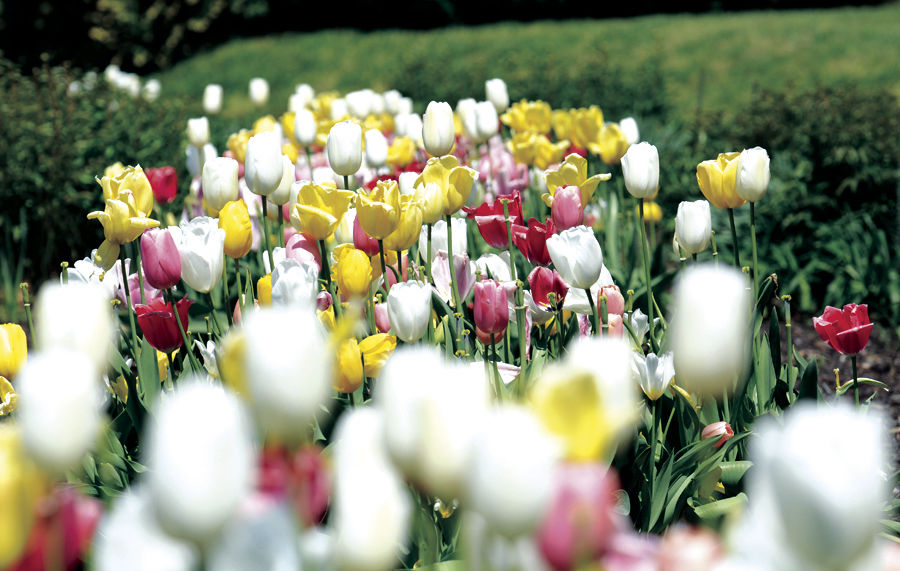 Take the HGW Virtual Tour
Click on this beautiful photo by Jeff Poole
Take the HGW Virtual Tour
Click on this beautiful photo by Jeff Poole
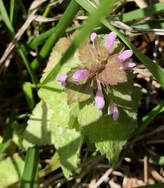
Henbit and Purple Deadnettle - Food sources for pollinators
These two plants, Lamium amplexicaule and Lamium purpureum, are related to the mint family and are considered by many to be nuisance weeds. But pollinators, especially honey bees and bumble bees, use these plants as food. Henbit provides pollen and nectar while Purple Deadnettle is a nectar source. (Photo of Purple Deadnettle by MS Queitzsch)
These two plants, Lamium amplexicaule and Lamium purpureum, are related to the mint family and are considered by many to be nuisance weeds. But pollinators, especially honey bees and bumble bees, use these plants as food. Henbit provides pollen and nectar while Purple Deadnettle is a nectar source. (Photo of Purple Deadnettle by MS Queitzsch)
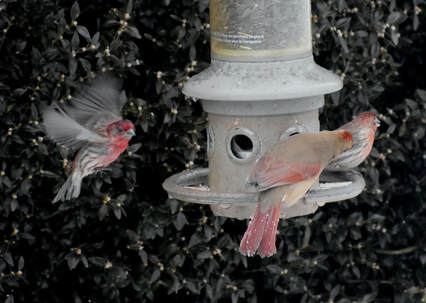
Bird Lovers in Virginia are urged to stop using feeders for the next few weeks - Feeder diseases have been increasing across Virginia
The Blue Ridge Wildlife Center has sounded an alert about the number of cases of disease in finches, seeing record numbers of finches needing care. Diseases observed include mycoplasmosis, salmonella and trichomoniasis. The Center urges bird lovers to stop using feeders at least until April. They encourage planting native plants for more natural food sources. To control disease if you just want to keep using your feeder, a multi-step cleaning is essential. This means cleaning each feeder each week, more frequently is better, by: (1) emptying each feeder and scrubbing each feeder with soap and water, then (2) rinsing, followed by (3) soaking in a 10% bleach solution for 15 minutes, followed by (4) rinsing, and (5) air drying the feeder. These steps will not totally prevent disease.
The Blue Ridge Wildlife Center has sounded an alert about the number of cases of disease in finches, seeing record numbers of finches needing care. Diseases observed include mycoplasmosis, salmonella and trichomoniasis. The Center urges bird lovers to stop using feeders at least until April. They encourage planting native plants for more natural food sources. To control disease if you just want to keep using your feeder, a multi-step cleaning is essential. This means cleaning each feeder each week, more frequently is better, by: (1) emptying each feeder and scrubbing each feeder with soap and water, then (2) rinsing, followed by (3) soaking in a 10% bleach solution for 15 minutes, followed by (4) rinsing, and (5) air drying the feeder. These steps will not totally prevent disease.
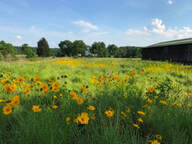
Learn the Secrets to a Thriving Wildflower Meadow
The Clifton Institute is offering a zoom presentation about their ongoing survey of native grasslands, AKA "Piedmont Prairie." Tune in on December 10, 7-8 p.m. to learn which native plants thrive in our region. Seed packets of grasses and wildflowers designed from this research are also available. For more information, go to:
https://cliftoninstitute.org/evrplus_registration/?action=evrplusegister&event_id=346
The Clifton Institute is offering a zoom presentation about their ongoing survey of native grasslands, AKA "Piedmont Prairie." Tune in on December 10, 7-8 p.m. to learn which native plants thrive in our region. Seed packets of grasses and wildflowers designed from this research are also available. For more information, go to:
https://cliftoninstitute.org/evrplus_registration/?action=evrplusegister&event_id=346
Beekeeper and honey producer, Diego Decorte, spoke at Monteith about the need to re-establish bee colonies to provide hope for the future of nature and humans. Nature is challenged by the impacts of humans but humans rely on nature - air, water, soil, plants - for survival. Bees are crucial pollinators for the plants humans rely on. Bees need a mix of trees and flowering plants to thrive. Treeless fields do not provide tree pollen which is crucial for bee nutrition. Both nectar (sugars) and pollen (carbohydrates) are key components for healthy bee populations. A diversity of plants is critical to ensure that bees with specialized plant needs are provided for. Honey is a superfood. Its natural properties keep it edible for humans for long periods provided the honey has not been heated. Because pasteurization is a process that can remove some of the benefits of natural honey,the ability to market non-pasteurized honey is important for honey producers.
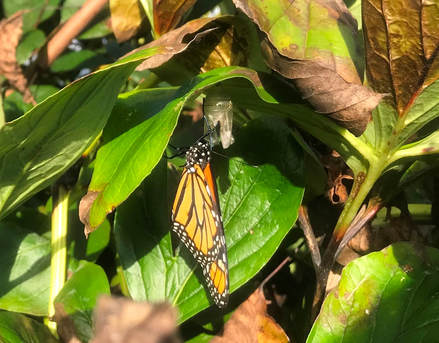
Winter Garden “not so” Clean-up
This has been a great season for Monarch reproduction, but be careful: many Monarchs still have Chrysalis in progress on your plant material. Give it a few more weeks before you begin garden clean-up. Take a moment, take a breath, and think about all the insects and wildlife that depend on what we consider “garden debris” to make it through the winter.
Most current Landscape Architects and Garden Designers encourage leaving as much spent material standing as possible throughout the winter months to provide cover and food sources for over-wintering insect and bird populations. Try to train your eye to see the architectural beauty of skeletal forms of tall perennials like echinacea and rudbeckia, and leave their seed heads intact for nuthatches, finches and mockingbirds to survive the winter months. Commercial seed is too limited and nutritionally empty to support them through the winter.
So you’re not being lazy - you are doing a very important good to provide essential species survival!
This has been a great season for Monarch reproduction, but be careful: many Monarchs still have Chrysalis in progress on your plant material. Give it a few more weeks before you begin garden clean-up. Take a moment, take a breath, and think about all the insects and wildlife that depend on what we consider “garden debris” to make it through the winter.
Most current Landscape Architects and Garden Designers encourage leaving as much spent material standing as possible throughout the winter months to provide cover and food sources for over-wintering insect and bird populations. Try to train your eye to see the architectural beauty of skeletal forms of tall perennials like echinacea and rudbeckia, and leave their seed heads intact for nuthatches, finches and mockingbirds to survive the winter months. Commercial seed is too limited and nutritionally empty to support them through the winter.
So you’re not being lazy - you are doing a very important good to provide essential species survival!
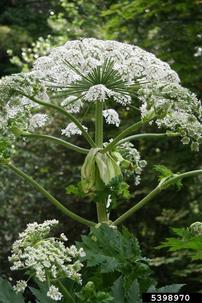
Invasive Plant alerts!
Giant Hogweed has been sighted in several parts of Virginia with 2 serious cases reported in Fredericksburg. It is a member of the wild carrot family native to Asia and can reach heights of 6-10 feet or more. It looks like a giant Queen Anne's Lace. It is highly toxic! Do not touch, pull, brush against, or weed-whack this plant. Do not try to remove this plant by yourself. Direct contact with this plant sensitizes the skin to the sun and leaves 3rd degree burns. If you see or suspect this plant, contact your local Virginia Cooperative Extension Office. For more photos and information you can visit www.vainvasivespecies.org/species/giant-hogweed. (Photo is by Robert Videki, Doronicum Kft.)
Spotted Knapweed , a non- toxic invasive plant, has been sighted in Orange County. It is an invasive biennial in the aster family that is commonly found along farm lanes, woodland roads, and fields. It releases a toxin that prevents other nearby plants from growing and impairs native flora. Removing this plant before seeding is crucial. This plant may be pulled or weed whacked while flowering but before seed sets.
Giant Hogweed has been sighted in several parts of Virginia with 2 serious cases reported in Fredericksburg. It is a member of the wild carrot family native to Asia and can reach heights of 6-10 feet or more. It looks like a giant Queen Anne's Lace. It is highly toxic! Do not touch, pull, brush against, or weed-whack this plant. Do not try to remove this plant by yourself. Direct contact with this plant sensitizes the skin to the sun and leaves 3rd degree burns. If you see or suspect this plant, contact your local Virginia Cooperative Extension Office. For more photos and information you can visit www.vainvasivespecies.org/species/giant-hogweed. (Photo is by Robert Videki, Doronicum Kft.)
Spotted Knapweed , a non- toxic invasive plant, has been sighted in Orange County. It is an invasive biennial in the aster family that is commonly found along farm lanes, woodland roads, and fields. It releases a toxin that prevents other nearby plants from growing and impairs native flora. Removing this plant before seeding is crucial. This plant may be pulled or weed whacked while flowering but before seed sets.
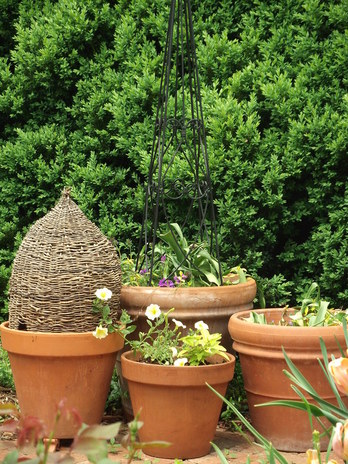
Save the Bees: Avoid Neonicotinoids in your yard and garden
Neonicotinoids (or neonics) are insecticides that use neuro-active ingredients to affect the central nervous system of insects to cause death. Neonics include acetamiprid, clothianidin, imadacloprid (one of the most widely used of the neonics), nitenpyram, nithiazine, thiacloprid, and thiamethoam. The most comprehensive study to date of the impact of neonics, completed this year in Europe, concluded that neonicotinoids are devastating to both honeybee and native bee populations. Neonics can be found in seeds and plants sold at many stores and gardening centers and in many products, including non-organic products used to treat roses. Neonic residues can persist in plants and soil for up to six years and are poisonous to pollinators that are essential to our ecosystem and economy. Some pollinators, like the monarch caterpillar, may die after only two or three bites of neonicotinoid treated plant.
Garden Club of America Calls For Action to Restrict Neonicotinoids.
On May 5th, 2017, the GCA’s executive board asked the Secretary of the Department of Agriculture to restrict neonicotinoid use in the US. The letter stressed the importance of pollinators and their role in society. GCA, concerned that consumers lack awareness of the impact of neonics on pollinators and neonic residues in plants they purchase, called on the U.S. Department of Agriculture to take action to regulate neonics. The goal is to stop plant distributors from using neonicotinoids, or at a minimum, to require labeling if neonics have been used to treat a plant so that a buyer can make an informed decision.
Neonicotinoids (or neonics) are insecticides that use neuro-active ingredients to affect the central nervous system of insects to cause death. Neonics include acetamiprid, clothianidin, imadacloprid (one of the most widely used of the neonics), nitenpyram, nithiazine, thiacloprid, and thiamethoam. The most comprehensive study to date of the impact of neonics, completed this year in Europe, concluded that neonicotinoids are devastating to both honeybee and native bee populations. Neonics can be found in seeds and plants sold at many stores and gardening centers and in many products, including non-organic products used to treat roses. Neonic residues can persist in plants and soil for up to six years and are poisonous to pollinators that are essential to our ecosystem and economy. Some pollinators, like the monarch caterpillar, may die after only two or three bites of neonicotinoid treated plant.
Garden Club of America Calls For Action to Restrict Neonicotinoids.
On May 5th, 2017, the GCA’s executive board asked the Secretary of the Department of Agriculture to restrict neonicotinoid use in the US. The letter stressed the importance of pollinators and their role in society. GCA, concerned that consumers lack awareness of the impact of neonics on pollinators and neonic residues in plants they purchase, called on the U.S. Department of Agriculture to take action to regulate neonics. The goal is to stop plant distributors from using neonicotinoids, or at a minimum, to require labeling if neonics have been used to treat a plant so that a buyer can make an informed decision.
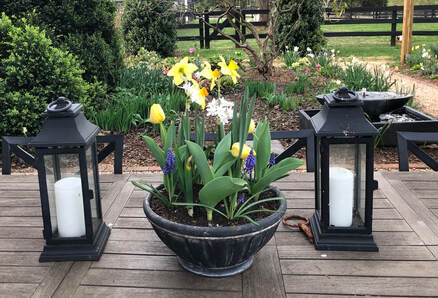
Remember the November Dolley Madison Bulb Workshop hosted by Jane Hammond?
Member Carla Passarello shared a photo of her blooming bulbs. Share photos of your bulbs too by emailing your photo to [email protected].
Member Carla Passarello shared a photo of her blooming bulbs. Share photos of your bulbs too by emailing your photo to [email protected].
Garden Club of America
Honorable Mention: Trillium grandiflorum
Nominated by Carla Passarello and DeLane Porter of the Dolley Madison Garden Club, Zone VII

DeLane Porter
DMGC Horticulture Chairman
Tradescantia virginiana, spiderwort, is one of Virginia's most renowned native herbaceous plants. If we had a state plant, as 35 other states do, T. virginiana should be our chosen symbol. It is only fitting this plant was selected to enhance the posters for the DMGC 2016 Conservation Forum. After all what other native Virginia plant has as much history and is recognized in so many gardens around the world?
The American Indians used T. virginiana to treat a number of conditions, including stomachaches, kidney ailments, female problems and cancer. The plant's leaf was smashed and applied to insect bites and stings. (Spiderwort was once believed to be a cure for a poisonous spider that later proved to be harmless, therefore the common name, spiderwort) The seeds were crushed into a powder and used as a snuff for nosebleeds. Additionally, leaves were tossed for salads and seeds roasted for soups and breads. The Jamestown settlers learned of the significance of this plant and soon cultivated spiderwort in their gardens. By 1629 this plant flourished in John Tradescant's famous garden, the "Ark" located on the south side of the Thames. Tradescant the Elder, "official" gardener to King Charles I, was a subscriber to the Virginia Company and a friend of Captain John Smith. It is believed T. virginiana was shipped from Virginia to England in Captain John Smith's sea chest. This plant quickly became an ornamental favorite in the seventeenth century and is now propagated in many parts of the world. John Tradescant the Elder and his son, John the Younger, were both famous gardeners and plant collectors. In 1648 Carl Linnaeus, the father of binomial nomenclature, renamed this genus to honor these English naturalist and explorers.
This hardy plant shares many characteristics with the daylily. The one inch three-petaled flower, bright bluish-purple, can be found in wooded areas, beside streams and in fields from southern Canada to northern Argentina. This perennial plants flowers from May to October with seeds ripening between August and October. The blossoms are short lived but new flowers develop daily during he blooming period. The plant grows to approximately 1 to 1.5 feet with unique leaves that wrap around the stem. The plant prefers moist alkaline soils with shady conditions. The flowers attract butterflies and bumble bees. Even though T. virginiana is a common wild plant, it is cultivated for borders and container gardening.
NOVEMBER BULB WORKSHOP AT MAPLE RUN FARM
Dolley Madison's Jane Hammond held a bulb workshop attended by members of Dolley Madison Garden Club and Charlottesville and Rivanna Garden Clubs. The theme of the workshop was "making bulb lasagna" - layering bulbs that bloom at different times in the same container to enjoy a spring season of successive blooms. Bulbs included varieties of narcissus, crocus, muscari, allium, tulip, and chionodoxa.
Dolley Madison's Jane Hammond held a bulb workshop attended by members of Dolley Madison Garden Club and Charlottesville and Rivanna Garden Clubs. The theme of the workshop was "making bulb lasagna" - layering bulbs that bloom at different times in the same container to enjoy a spring season of successive blooms. Bulbs included varieties of narcissus, crocus, muscari, allium, tulip, and chionodoxa.
Member Annie Vanderwarker's Blue Ribbon winning floral arrangement in the Garden Club Of Virginia Daffodil Show 2021. Congratulations Annie! Congratulations also to member Jane Hammond for her Red Ribbon winning photograph in "Change is Stirring. See the virtual show at Daffodil Day 2021.
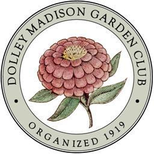
Email: [email protected]
Website: www.dmgcvirginia.org Our Club Facebook page: @DolleyMadisonGardenClub Our Historic Garden Week Facebook page: @HGWOofVA Follow us on Instagram @historicgardenweekorangeva |
© Dolley Madison Garden Club
All photos/images/text and contents are copyrighted . All Rights Reserved P.O. Box 1017 Orange, VA 22960 |
